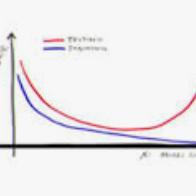In recent years, we have witnessed the great advancement of Deep neural networks (DNNs) in image restoration. However, a critical limitation is that they cannot generalize well to real-world degradations with different degrees or types. In this paper, we are the first to propose a novel training strategy for image restoration from the causality perspective, to improve the generalization ability of DNNs for unknown degradations. Our method, termed Distortion Invariant representation Learning (DIL), treats each distortion type and degree as one specific confounder, and learns the distortion-invariant representation by eliminating the harmful confounding effect of each degradation. We derive our DIL with the back-door criterion in causality by modeling the interventions of different distortions from the optimization perspective. Particularly, we introduce counterfactual distortion augmentation to simulate the virtual distortion types and degrees as the confounders. Then, we instantiate the intervention of each distortion with a virtual model updating based on corresponding distorted images, and eliminate them from the meta-learning perspective. Extensive experiments demonstrate the effectiveness of our DIL on the generalization capability for unseen distortion types and degrees. Our code will be available at https://github.com/lixinustc/Casual-IRDIL.
翻译:近年来,我们看到深神经网络(DNNS)在图像恢复方面取得了巨大进步,然而,一个关键的限制因素是,它们不能全面推广到不同程度或类型的真实世界退化;在本文中,我们首先从因果关系的角度提出图像恢复的新培训战略,以提高DNNS在未知退化方面的普及能力。我们的方法叫做扭曲性反动表征学习(DIL),把每一种扭曲类型和程度当作一个特定的混淆器,并通过消除每一种退化的有害融合效应来学习扭曲性与异变性的表现。我们通过模拟从优化角度进行不同扭曲的干预,从因果关系的角度从后门标准中得出我们的DIL。特别是,我们引入反事实扭曲的增强,以模拟虚拟扭曲类型和程度作为混凝土体。然后,我们用一个虚拟模型,根据相应的扭曲性图像进行更新,从元化学习的角度来消除这些扭曲性与异性的表现。广泛的实验表明我们DILL对视扭曲类型和程度的一般化能力的有效性。我们的代码将可在 https://Lst/comgius。</s>



